Key Takeaways
1. Quakers: A Movement Rooted in Direct Encounter and Social Witness
It is often said that the Quakers have had an influence beyond their numbers.
Influence and Core Ideas. Despite their relatively small numbers, Quakers have significantly impacted civil society, particularly through their peace advocacy and social justice work. Their core tenets include direct spiritual experience, consensus-based decision-making, spiritual equality, and a commitment to peace and social witness. These principles have shaped their unique approach to worship, community, and engagement with the world.
Key Characteristics. Quakers, also known as Friends, are recognized for their silent worship, lack of ordained clergy, and historical opposition to war. Their social witness has led to involvement in prison reform, abolition of slavery, and various other humanitarian causes. The movement began in 17th-century England and has since spread globally, evolving into diverse traditions.
Traditions and Global Presence. Today, Quakerism encompasses three main traditions: Evangelical, Conservative, and Liberal. With approximately 340,000 members worldwide, Quakers continue to uphold their foundational values while adapting to new theological insights and social contexts. Their commitment to peace, equality, and direct spiritual experience remains central to their identity.
2. The Genesis of Quakerism: Fox's Revelation and the Seeker Influence
Now after I had received that opening from the Lord that to be bred at Oxford or Cambridge was not sufficient to fit a man to be a minister of Christ, I regarded the priests less and looked more after the dissenting people ...
Fox's Transformative Experience. George Fox, the founder of Quakerism, experienced a profound spiritual revelation in 1647, realizing that direct encounter with God superseded formal religious education. This experience led him to reject traditional church structures and seek guidance directly from Christ. His revelation became the cornerstone of Quaker belief, emphasizing personal spiritual experience over institutional authority.
The Role of the Seekers. Fox's ideas resonated with groups of "Seekers" in northern England, who had already separated from the national Church and practiced silent worship. These Seekers, disillusioned with existing religious institutions, found in Fox's message a compelling vision for a more authentic spiritual life. Many Seekers joined Fox, forming the core of the early Quaker movement.
Pendle Hill and the Gathering of a People. In 1652, Fox climbed Pendle Hill, where he had a vision of a "great people to be gathered." This vision marked a turning point, shifting the focus from individual seeking to the establishment of a new church. Soon after, Fox's preaching at Firbank Fell drew hundreds, and Margaret Fell's conversion at Swarthmoor Hall provided crucial leadership and resources for the burgeoning movement.
3. Early Quaker Theology: A Radical Reformation and the Inward Second Coming
‘Christ is come and is Coming’ they claimed.
Reformation and the Second Coming. Early Quakerism emerged as a radical response to both the Protestant Reformation and the Christian expectation of the Second Coming. Quakers sought a more complete reformation of Christianity, emphasizing direct spiritual experience over outward forms and rituals. They believed the Second Coming was not a future event but an inward experience, available to all who sought it.
Rejection of Outward Forms. This inward focus led Quakers to reject traditional church structures, including priests, sermons, and outward sacraments. They saw these as unnecessary intermediaries, arguing that direct communion with God made them obsolete. Every day was holy, and every place was a potential site for worship, reflecting the personal and continuous nature of spiritual transformation.
Spiritual Equality and Universal Salvation. Quakers proclaimed the spiritual equality of all people, regardless of gender or social status. They challenged Calvinist doctrines of predestination, asserting the possibility of universal salvation through direct encounter with God. This message of inclusivity and spiritual empowerment attracted many followers, but also drew criticism from those who upheld traditional religious hierarchies and doctrines.
4. From Enthusiasm to Establishment: The Evolution of Quaker Doctrine and Practice
Diligent waiting rather than zealous mission work brought its own rich spirituality too.
The Shift from Eschatology to Introspection. By the mid-1660s, the initial fervor of the Second Coming began to wane, and Quaker theology shifted towards a more introspective approach. This change was partly a response to the persecution Quakers faced under Charles II, which led to imprisonment and death for many. The focus shifted from proclaiming the imminent arrival of the Kingdom to cultivating inner spiritual strength and resilience.
Formalization and Ecclesiological Discipline. In response to internal challenges and external pressures, the Quaker movement began to formalize its structure and practices. Monthly, Quarterly, and Yearly Meetings were established to provide oversight and maintain uniformity of belief and practice. This centralization of authority aimed to preserve the movement's identity and protect it from internal dissent and external threats.
The Rise of Quietism and Peculiarity. The 18th century saw the rise of Quietism within Quakerism, emphasizing humility, diligence, and inward withdrawal from the world. Quakers adopted outward symbols of piety, such as plain dress and speech, to distinguish themselves from a corrupting world and to cultivate a sense of spiritual purity. This period marked a shift from active mission to a more contemplative and inward-focused spirituality.
5. The 19th-Century Schism: Evangelical Revival and the Fragmentation of Quakerism
The 19th century saw the end of Quakerism as a single community and, with it, the end of the claim that Quakerism represented the true Church.
The Influence of the Evangelical Revival. The 19th century brought significant changes to Quakerism, particularly through the influence of the Evangelical Revival. This movement emphasized the authority of scripture and the importance of personal conversion, leading to theological disputes within the transatlantic Quaker community. The primary fault line emerged between those influenced by the Revival and those who prioritized the interiority of Quaker spirituality.
The Great Separation and its Aftermath. In America, these tensions led to the Great Separation, dividing Quakers into Orthodox and Hicksite branches. The Orthodox emphasized scripture and traditional doctrines, while the Hicksites prioritized individual spiritual experience and social justice. This division spread to other Yearly Meetings, creating a complex landscape of competing Quaker identities.
Renewal, Revival, and the Rise of Pastoral Quakerism. Within the Orthodox branch, further divisions arose between Renewal/modernist and Revival/holiness tendencies. Revival Friends embraced interdenominational holiness meetings, leading to the introduction of pastors and programmed worship in many Quaker Meetings. This innovation sparked further schisms, as some Quakers sought to preserve the traditional silent worship and unprogrammed ministry.
6. Quaker Worship: From Silent Expectation to Programmed Services
Through silence, Quakers claimed, God could be best encountered and heard.
The Basis of Quaker Worship: Silence and Direct Revelation. Early Quaker worship centered on silent waiting, creating space for direct encounter with God. This practice, borrowed from the Seekers, was rooted in the belief that Christ could speak directly to each individual, without the need for intermediaries. Silence was both the medium of approach to God and the medium for experiencing God's presence.
The Role of Vocal Ministry. While silence was paramount, vocal ministry was also an accepted part of Quaker worship. Anyone could speak when prompted by God, sharing insights and experiences with the gathered community. However, vocal ministry was always secondary to the silent waiting, emerging from and returning to the stillness.
The Evolution of Worship Practices. Over time, Quaker worship practices evolved, reflecting changing theological understandings and social contexts. The rise of pastoral Quakerism in the 19th century led to the introduction of programmed services, with pastors leading worship and incorporating elements such as hymns and sermons. This innovation sparked controversy, as some Quakers sought to preserve the traditional silent worship.
7. Belief and Theology: A Spectrum from Evangelical Certainty to Liberal Permissiveness
The question of belief is given different prominence and different levels of specificity across the three main traditions of Quakerism.
Evangelical Quakerism: Scripture and the Atoning Sacrifice. Evangelical Quakers emphasize the authority of scripture and the divinity of Jesus Christ. They believe in the atoning sacrifice of Christ and the possibility of personal salvation through faith. Their theology aligns closely with mainstream Protestant Christianity, with a focus on evangelism and personal piety.
Conservative Quakerism: The Inward Light and Traditional Practices. Conservative Quakers prioritize the experience of the Inward Light, the direct encounter with Christ within each individual. They maintain traditional Quaker practices, such as silent worship and plain living, and are wary of theological innovation. Their theology balances the authority of scripture with the primacy of personal revelation.
Liberal Quakerism: Experience and Theological Pluralism. Liberal Quakers place primary authority on personal experience, embracing theological pluralism and welcoming diverse perspectives. They may or may not identify as Christian, and their beliefs range from theistic to non-theistic. Their emphasis is on the form of Quakerism, the way in which the Quaker group is Quaker, its worship and business method, its testimony and values.
8. Language and Silence: The Quaker Critique of Worldly Speech and the Liberal Caution Towards Theology
Silence was the means to worship and to inward communion.
Early Quaker Critique of Worldly Speech. Early Quakers critiqued "carnal talk" and "fleshly speaking," emphasizing the importance of silence as a means of approaching God. They believed that true communication came from the Spirit, not from human intellect or eloquence. This emphasis on silence shaped their worship practices and their approach to language in general.
The Liberal Caution Towards Theology. In the Liberal tradition, this caution towards worldly speech has evolved into a caution towards theology itself. Liberal Quakers often view theological statements as limited and provisional, emphasizing the importance of personal experience over doctrinal certainty. This approach reflects a deep respect for the mystery of the Divine and a recognition of the limitations of human language.
The "Absolute Perhaps" and the Liberal Quaker Identity. This caution towards theology has led to a distinctive Liberal Quaker identity, characterized by a commitment to open-minded inquiry and a recognition of the inherent uncertainty of religious truth claims. This "absolute perhaps" shapes their approach to ecumenism and their engagement with other faith traditions.
9. Ecumenism: From Sectarian Exclusivity to Interfaith Dialogue
Relationships beyond the Christian church embrace dialogue with other communities of faith.
Early Quaker Exclusivity and Critique. In their early years, Quakers were highly critical of other religious groups, viewing themselves as the one true Church. They challenged traditional religious practices and beliefs, often in confrontational ways. This sectarian outlook reflected their belief in the imminent arrival of the Kingdom and the need to call others to repentance.
The Shift Towards Toleration and Cooperation. Over time, Quakers began to adopt a more tolerant and cooperative approach towards other religious groups. This shift was partly driven by the need to seek relief from persecution and to advocate for religious toleration. Quakers began to work with other nonconformists on shared concerns, such as the abolition of slavery.
Ecumenical and Interfaith Engagement in the 20th Century. In the 20th century, Quakers became increasingly involved in ecumenical and interfaith initiatives. They joined the World Council of Churches and other ecumenical bodies, and they engaged in dialogue with other faith traditions. This engagement reflected a growing recognition of the value of interfaith understanding and cooperation.
10. The Future of Quakerism: Navigating Diversity and Maintaining Distinctiveness
Quakerism as a whole is numerically healthy and growing.
The Challenge of Diversity. The diverse theological and cultural landscape of contemporary Quakerism presents both opportunities and challenges. The varying approaches to belief, worship, and social witness can create tensions within the Quaker community. Navigating this diversity while maintaining a sense of shared identity is a key challenge for the future of Quakerism.
The Growth of Evangelical Quakerism in Africa and Latin America. The most significant trend in contemporary Quakerism is the rapid growth of Evangelical Quakerism in Africa and Latin America. This growth is transforming the geographical and cultural center of the Quaker movement, shifting it away from its traditional strongholds in North America and Europe. This shift presents opportunities for cross-cultural exchange and learning, but also raises questions about the future of Quaker leadership and identity.
Maintaining Distinctiveness in a Changing World. As Quakerism adapts to new contexts and embraces diverse perspectives, it faces the challenge of maintaining its distinctiveness. The core values of direct spiritual experience, consensus-based decision-making, spiritual equality, and a commitment to peace and social witness remain central to Quaker identity. The future of Quakerism will depend on its ability to uphold these values while embracing change and engaging with the challenges of the 21st century.
Last updated:
Review Summary
The Quakers: A Very Short Introduction by Pink Dandelion is generally well-received as a concise overview of Quakerism. Readers appreciate its comprehensive coverage of Quaker history, beliefs, and practices, including the three main branches: Evangelical, Conservative, and Liberal. Some find it repetitive and occasionally dry, but most consider it informative and accessible. The book is praised for its clarity in explaining complex theological concepts and historical developments. A few reviewers note that it focuses more on British Quakerism and lacks depth on certain topics, but overall it's recommended as a solid introduction to the subject.
Very Short Introductions Series Series
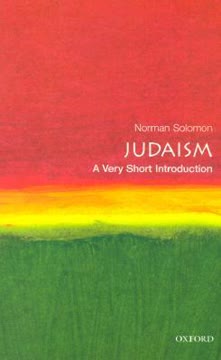
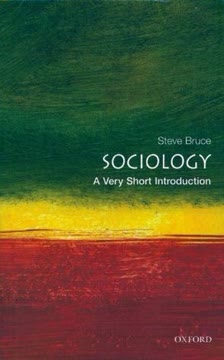
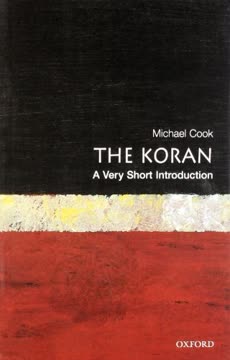
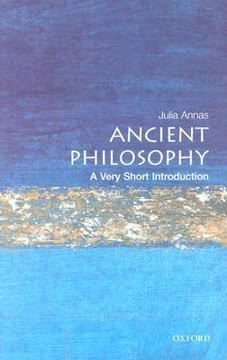


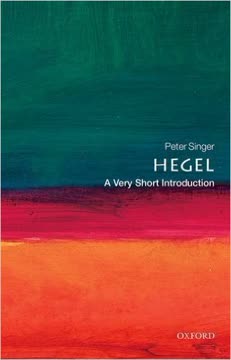
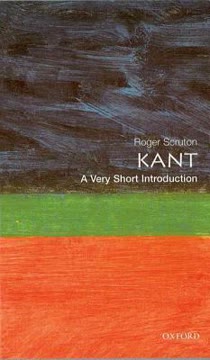
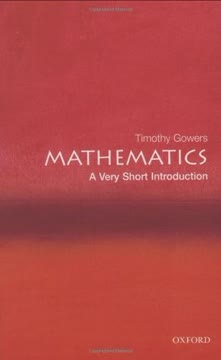
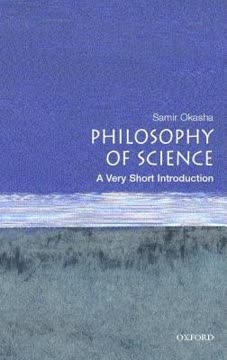


Similar Books
Download PDF
Download EPUB
.epub digital book format is ideal for reading ebooks on phones, tablets, and e-readers.










